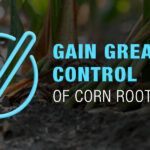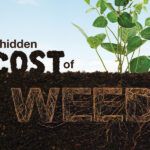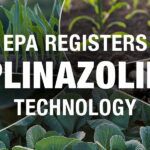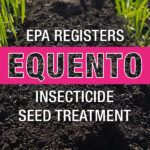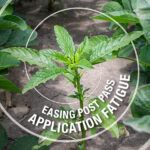No Small Potatoes for Sustainability
A partnership between Syngenta and the Potato Sustainability Alliance is paying big dividends via valuable sustainability data.

Sustainability practices are embraced by successful farmers, especially as they relate to yield and profitability. Allied industry partners like Syngenta are at their most impactful with their boots in the dirt alongside producers, working to understand how sustainability and profitability work hand-in-hand.
With that standard in mind, the Sustainable Solutions team at Syngenta partnered with the Potato Sustainability Alliance (PSA) in 2023 to provide actionable on-farm sustainability insights to potato growers, packers, processors and retailers across North America. Applying the Sustainable Outcomes in Agriculture standard, developed by Syngenta, and tracking their practices with the help of the Cropwise™ Sustainability app, nearly 500 potato growers have been able to improve, measure and report sustainability on their farms and better communicate their sustainability stories up and down the supply chain. One year in, just about all the parties involved agree the partnership has been a rousing success.
Why Sustainability Data Matters
When it comes to sustainability, it’s fair to ask, What exactly are we supposed to be measuring? And is the data I’m getting a good sign or not?
Dozens of different metrics exist that the industry can use to gain an understanding of sustainability in agriculture. Coming to an agreement as to which are the most applicable and helpful is one of the major challenges the industry faces.
“As our understanding of the impact of these indicators improves, so will our ability to better predict outcomes for the industry as changes or improvements are implemented,” says John Mesko, CEO of PSA. “Collectively, we are still looking for the right standard. We want to see resilience and improvements in our production systems over time.”
According to Mesko, there’s really no definite line to declare a farm sustainable or not. “It’s just not that simple. It requires looking at the whole health of a farm, of a region, of an industry,” he says.
Sustainability is complicated, but today’s growers didn’t make it this far by not being sustainable. Yet, characterizing and proving sustainability remains a challenge for producers.
“For years, farmers have been asked by these companies in the value chain for all this sustainability information, and it’s been a challenge to actually collect that data,” says Jeff Lail, senior technical data analyst on the sustainability team at Syngenta. “Farmers did not start farming so they could sit at the computer and type for three hours about what makes their farm sustainable. A big part of our mission is to make that process easier for farmers so value chain partners can get the information they need.”
Working Toward Simplifying Sustainability
“Ultimately, we want to simplify sustainability for growers,” says Steven Wall, development manager of sustainable solutions at Syngenta.
A major part of that simplification is to define what on-farm sustainability insights growers should look for, what those insights tell them about their farms, and what benefits those insights provide for different players along the value chain. In potato production, the biggest sustainability impacts on both an environmental and an economic level come from irrigation, tillage and nitrogen fertilizer. A failure to play those cards right can not only take a bite out of this year’s profit but put farmers in a hole that could take years to climb out of.
“Those are expensive inputs, and there’s not a farmer in the world who wants to do any of those things unnecessarily,” says Mesko. “We’ve seen new technologies, new production methods and new understanding of the impact of these practices; they really open farmers up to making changes.”
For several years, PSA conducted its own sustainability survey but found that, ultimately, it wasn’t delivering the actionable insights they hoped it would. The organization’s partnership with Syngenta and adoption of the Sustainable Outcomes in Agriculture standard has provided uniformity and clarity to their approach, which in turn has encouraged producer participation.
PSA Implements Cropwise Sustainability
Cropwise Sustainability offers growers the opportunity to self-assess their performance in areas such as biodiversity, fertilizer use and irrigation efficiency. After growers fill out an assessment in the app about a range of sustainability practices, Syngenta aggregates that information to show individual producers how they compare to their peers in those areas. Growers maintain ownership of their data and, if they so choose, can share assessment results with their choice of partners along the value chain, from packers to processors to retailers. Just over a year in, the integration of Cropwise Sustainability into the potato industry has increased communication and begun fostering a sense of community around proving the sustainability of America’s favorite vegetable.
“When growers can see how they’re performing against their peers, their eyes are opened to what they can improve on their own farm,” says Wall. “Or they might say, ‘Maybe I can help educate some folks on what I’m doing and help them improve as well.’ It generates a sense of community. Then value chain partners can receive that aggregate report of all their growers in the program, and they can really start to understand the potato supply, and how they’re performing and what’s realistic to expect as far as sustainable outcomes.”
Syngenta highly values the potato industry and has worked with PSA to incorporate crop-specific questions into the Cropwise Sustainability survey. Mesko points to three primary components as reasons for the program’s early success: ease of use; quick, specific and useful information for growers; and a big-picture look at sustainability measures across North America’s potato industry.
“Syngenta has gone to great lengths to accommodate our growers,” says Mesko. “Any grower who has a question or doesn’t understand something, they are able to provide some real-time help and support.”
Holding Room for Growth
Potatoes are grown on a longer rotation than a lot of crops — typically three to five years. There’s still a lot of progress to be made in accounting for practices in those rotation years, which likely have major repercussions on an operation’s actual sustainability. In a given year, any number of factors could cause a farm to need more water or nitrogen than planned, or for those inputs to be less efficient than expected.
“That’s the next thing up on our agenda,” says Mesko. “We’ll be looking for ways to track all that across a multiyear picture.”
“Something that happens repeatedly in the sustainability space is we get hung up on the measurement rather than what the measurement is supposed to create,” says Lail. “The data assessment is step one, but Cropwise Sustainability is designed to create partnerships. PSA and potato growers have understood that from the start, and that’s what has made it such a great initiative.”
4 Min Read
- With the help of the Sustainable Outcomes in Agriculture standard, developed by Syngenta, and the Cropwise™ Sustainability app, more growers can now better track and report their sustainable practices.
- Potato growers who use Cropwise Sustainability can clearly define which sustainability insights they are working toward.
- Next steps include analyzing sustainability practices across a multiyear, multi-crop rotation.
More Articles About Community & Culture
4 Min Read







